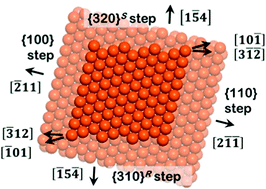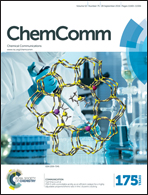Influence of step faceting on the enantiospecific decomposition of aspartic acid on chiral Cu surfaces vicinal to Cu{111}†
Abstract
On surfaces vicinal to Cu{111}, L-aspartic acid (L-Asp) adsorption causes steps to facet enantiospecifically into {310}R and {320}S steps. L-Asp has its highest heat of adsortion on surfaces that naturally expose the {310}R or {320}S steps but decomposes preferentially on the {310}R steps.

- This article is part of the themed collection: Chirality at the nanoscale


 Please wait while we load your content...
Please wait while we load your content...